

Natural
History Museum
Berne


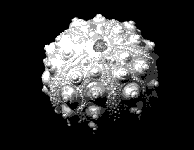

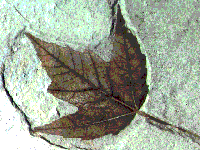


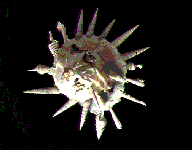
|
|
Field/Online
Collection(s):
|
-Entomology, Herpetology,
Malacology, Mammalogy,
Meteorites & Planetary Science,
Mineralogy, Non-Insect Invertebrates, Vertebrate
and Invertebrate Paleontology
|
 The
organizational structure of the Museum, in terms of its
collections, is as follows through these online
Departments: The
organizational structure of the Museum, in terms of its
collections, is as follows through these online
Departments:
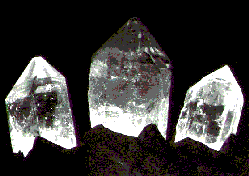 Earth
Sciences - The
origins of the Earth Science collections of the Natural
History Museum of Bern can be traced back to at least
1721, when three (3) large quartz crystals from the
Zinggenstock (Grimsel area, Bernese Oberland) were given
to the Library of Bern. Earth
Sciences - The
origins of the Earth Science collections of the Natural
History Museum of Bern can be traced back to at least
1721, when three (3) large quartz crystals from the
Zinggenstock (Grimsel area, Bernese Oberland) were given
to the Library of Bern.
- The Mineralogy
and
Petrography
section contains:
--The Systematic Mineral
collection (of about 30,000 specimens) is the
principal and best documented collection. Notable here
are Swiss Alpine minerals, minerals from the
Lengenbach quarry, and other Swiss locations (about
2000 Swiss localities represented).  Other
strongly represented regions and countries are the
U.S.A. (766 localitites), Germany (626), Italy (411),
France (254), Mexico (190), Austria (165), the Cech
Republic and Slovakia (combined 171 localities) and
Rwanda (36). There are about 1000 gemstones in the
collections. This collection is currently being
computer inventarized. Other
strongly represented regions and countries are the
U.S.A. (766 localitites), Germany (626), Italy (411),
France (254), Mexico (190), Austria (165), the Cech
Republic and Slovakia (combined 171 localities) and
Rwanda (36). There are about 1000 gemstones in the
collections. This collection is currently being
computer inventarized.
--The Type Minerals
collections contain type material (holotypes or
cotypes) of the follwing species: Cervandonite-(Ce),
Hennomartinite, Imhofite, Kornite, Nchwaningite,
Nowackiite, Preiswerkite, Simonite, Sinnerite,
Tuzlaite, Wallisite.
--The Meteorites and
Impact-Related Materials (300 specimens) contain the
main masses of the Swiss meteorites RAFRÜTI (17
kg, find, anomalous iron) and UTZENSTORF (3.8 kg, H5,
fall, 16.08.1928) and one of the largest samples of
Ulmiz, Switzerland (28g, H5, fall, 25.12.1926).
Although the meteorite collection is relatively small,
it contains typical specimens from all major classes.
Included in the meteorite collection are a suite of
thin sections (partly polished) suitable for
educational purposes and research. A catalogue is
available upon request.
A serious loss to
the meteorite collection occurred in the 18th century
when the WALKRINGEN meteorite (stone, fell 18 May
1698) was lost. The collection of meteorite impact
products includes ejecta (mostly Malm limestone
blocks, shocked quartz grains) most probably from the
Miocene Ries Crater in Germany found in
fluvioterrestrial marls of equivalent age near St.
Gallen in Eastern Switzerland.
--The Ore collection
(about 5000 specimens) contains ore samples from Swiss
mines and prospects. Well represented areas are the
Jura mountains and the Bernese and Valais Alps.
Includes a collection of ore samples from the
Lengenbach quarry with typical features, incuding
phenomena related with the metamorphic formation of a
sulfide melt. A collection of ores from worldwide
deposits contains mostly didactic samples from many
major ore districts.
--The Petrographic
collections (about 10,000 specimens) are partly
regionally organized, partly they represent
spezialized research collections.
The most important
collections are:
- Hydrothermally
altered rocks from Alpine fissures
- Swiss rocks (area
specific and name specific)
- Swiss coals
- Systematic collection
of rocks (worldwide)
- Regional rock
collections from worldwide areas
- Collection of
glaciologic objects from Switzerland
- "Geological
phenomena"
- Diamond-related rocks
(Kimberlites, mantle xenoliths, high pressure
metamorphics)
--The Collections of Rocks
and Minerals from tunnels in the Swiss Alps
contain:
- Minerals from
the Gotthard highway tunnel
- Minerals from the
Furka railway tunnel
- Rocks from the
Simplon railway tunnel
- Rocks from the
Lötschberg railway tunnel
- The Palaeontology
collections incorporate a number of rare fossils from
the Swiss Alps. The collections comprise about 1680
drawers and many single oversized objects. The
invertebrates are dominant with 1405 drawers. Material
from the Swiss Alps: 455 drawers, the Swiss Jura
mountains: 185, the Swiss Tertiary: 295 and from other
countries: 470. Plants: 155, Vertebrates: 120 drawers.
The detailed grouping of this paleontological
collection is as follows:
-- Regional
collections
(mainly invertebrates) Regional
collections
(mainly invertebrates)
- Swiss Molasse basin:
Tertiary
- Swiss Jura mountains:
Mesozoic
- Swiss Alps:
Carboniferous to Tertiary
- Other countries: all
ages, much Tertiary
--Systematic
collections
*Swiss fossils
- Echinoderms from the
Jurassic of the Swiss Jura mountains
- Teeth of Chondrichthyes
from the Swiss Molasse
- others
*Plants (mainly Cenozoic
and Carboniferous, from different countries)
*Vertebrates (mainly
mammals, from different countries)
- Tertiary
- Ice age

--Research
collections
- Upper Marine Molasse
(Burdigalian), near Berne
- Oligocene corals from
southern Europe
- Collection for teaching,
demonstration and lending (in preparation)
--Important
single objects
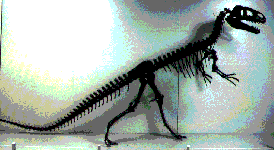
- The Collection of
Vertebrate
Animals contain
roughly the material listed below.
- Mounted animals: 6,000;
Skins and Furs: 10,000; Skulls: 11,500; Skeletons:
1,500; Fluid Specimens: 6,000
The computer inventory of
said collections is nearly finished: as of January 1997
over 95% of all specimens have been registered. A
searchable database via a gopher
server is also
available.
- Domestic Dogs -
--An important research
center of the Museum is the Albert
Heim Foundation for Canine
Research with
some 2000 dog skulls (not available to the general
public and accessible only on special appointment).
One of the undisputed treasures of this Research
Center is the nearly complete dog skulls from
Neolithic settlements.
--Of the 320 or so canine
breeds recognized by the International Canine
Federation (FCI), seven of these breeds have always
been attributed to Switzerland and form part of that
country's national heritage. These seven national
breeds of Switzerland are:
-four (4) breeds
of cattle dogs  (Bernese
Mountain Dog, Appenzell Mountain Dog, Entlebuch
Cattle Dog, and Great Swiss Mountain Dog), (Bernese
Mountain Dog, Appenzell Mountain Dog, Entlebuch
Cattle Dog, and Great Swiss Mountain Dog),
-one (1) breed of large, mastiff-type mountain dog
(St. Bernard Dog), and
-two (2) breeds of scent hound Swiss Hounds and
Smaller Swiss Hounds)
and they are presented
and detailed in the Swiss
Canine
Breeds
site.
- The Invertebrate
Collections date
from the middle of the 19th century to the present. The
most important and largest collections are listed
below.
Malacology
- Molluscs of the world
(~124,000, many type specimens)
- Seashells of the world
(~7,500)
- Seashells from Mozambique
(~12,000)
- Land snails (esp. from
Africa, ~6,000)
- Fresh water snails from
Thailand, land snails from Libya (~12,000, many
paratypes)
- Molluscs of Switzerland
(~1,000 & type specimens)
Entomology
- Lepidoptera of the world
(~57,000)
- Lepidoptera of
Switzerland (~125,000; 90 type
specimens)
- Coleoptera of Switzerland
(~115,200)
- Coleoptera of the world
(~16,000, paratype specimens)
- Diptera of Switzerland
(~2,000+1,300 samples)
- Odonata of Switzerland
(~3,000+13,000 exuvia)
- Hymenoptera of
Switzerland (~22,500)
- Hymenoptera of Brazil
(1,436, with 100 Adolpho Ducke types and
paratypes)
Corals (over 100 year old,
~200)
- Swiss
Amphibian and Reptile Conservation Programme
(KARCH)
represents the official task force in Switzerland to
promote, implement and coordinate efforts to conserve the
Swiss amphibian and reptile fauna, which is protected by
law in Switzerland since 1967.
Finally it should be noted that
the Museum is internationally known for its most important
diorama displays in Europe showing Swiss and foreign birds
and mammals in their natural surroundings. It also houses an
important collection of minerals which include rock crystals
from the Swiss Alps as well as an exquisite gemstone
cabinet. In addition, there are the modern educational
collections on zoological and geological subjects and
special exhibitions informing the public of new aspects in
natural history.
Adjacent to the Natural History
Museum is the Swiss Hunting and Game Museum at the Castle of
Landshut. Exhibits there include collections on the biology
of game and the history of hunting.
Two permanent
exhibits:
- The zoological exhibition
"Animals as Master Builders", and
- The earth science exhibition
"Rocks from the Earth"
under the collective title
"Built
by Nature" are
currently being presented.
|











 Other
strongly represented regions and countries are the
U.S.A. (766 localitites), Germany (626), Italy (411),
France (254), Mexico (190), Austria (165), the Cech
Republic and Slovakia (combined 171 localities) and
Rwanda (36). There are about 1000 gemstones in the
collections. This collection is currently being
computer inventarized.
Other
strongly represented regions and countries are the
U.S.A. (766 localitites), Germany (626), Italy (411),
France (254), Mexico (190), Austria (165), the Cech
Republic and Slovakia (combined 171 localities) and
Rwanda (36). There are about 1000 gemstones in the
collections. This collection is currently being
computer inventarized.


 (Bernese
Mountain Dog, Appenzell Mountain Dog, Entlebuch
Cattle Dog, and Great Swiss Mountain Dog),
(Bernese
Mountain Dog, Appenzell Mountain Dog, Entlebuch
Cattle Dog, and Great Swiss Mountain Dog),